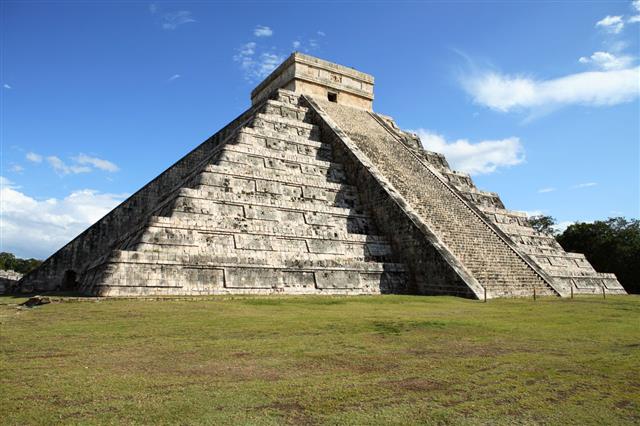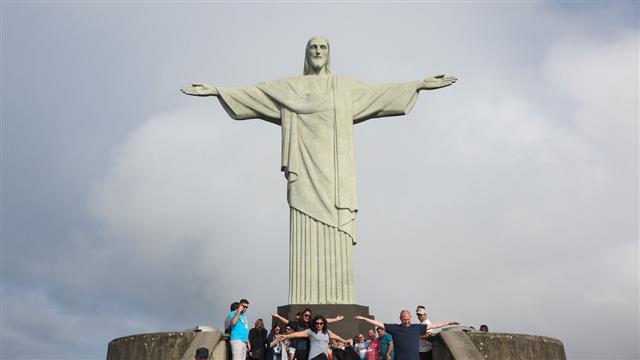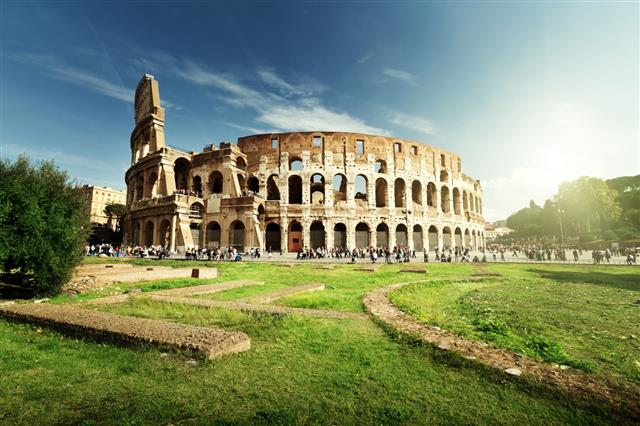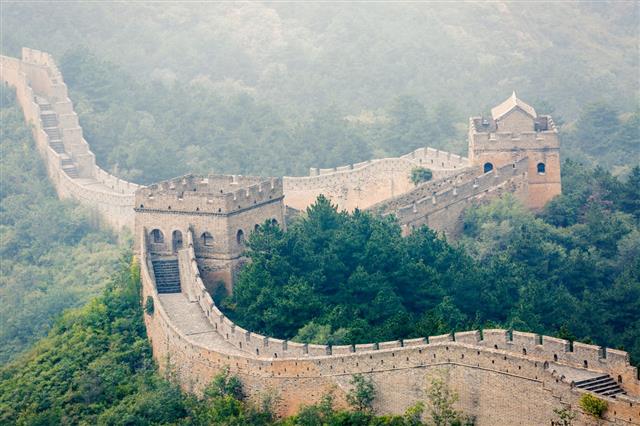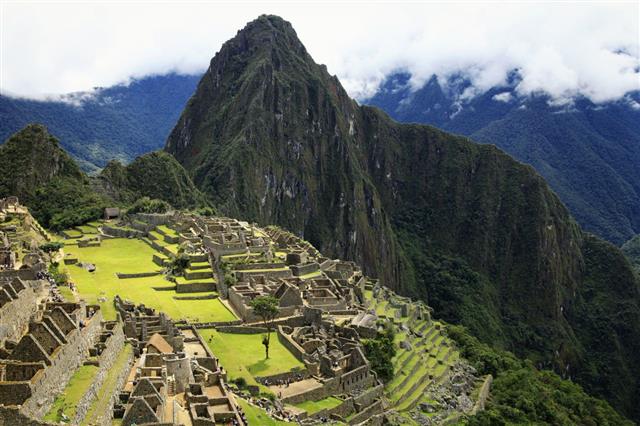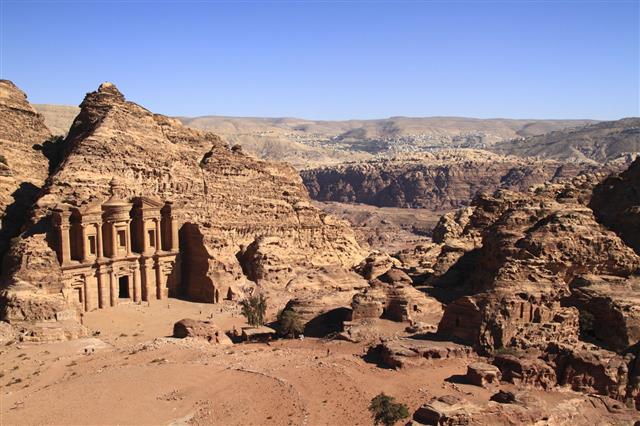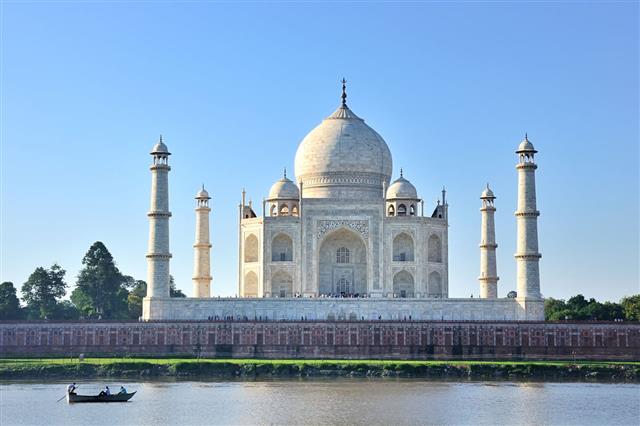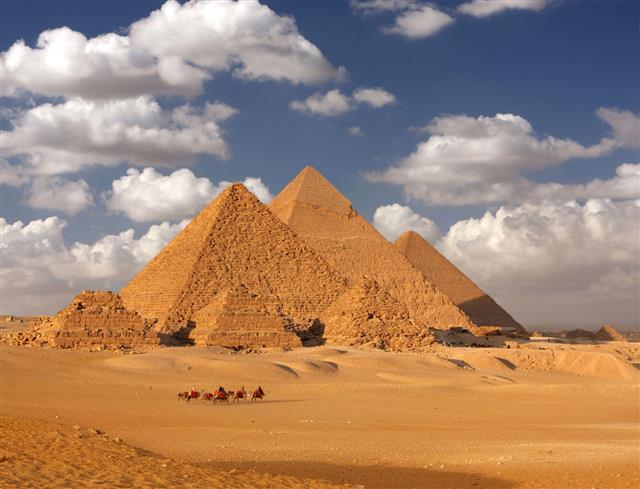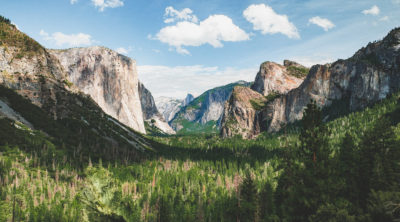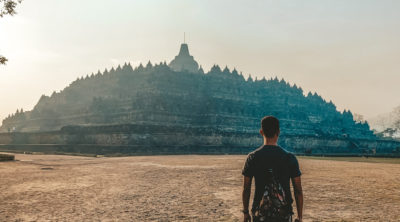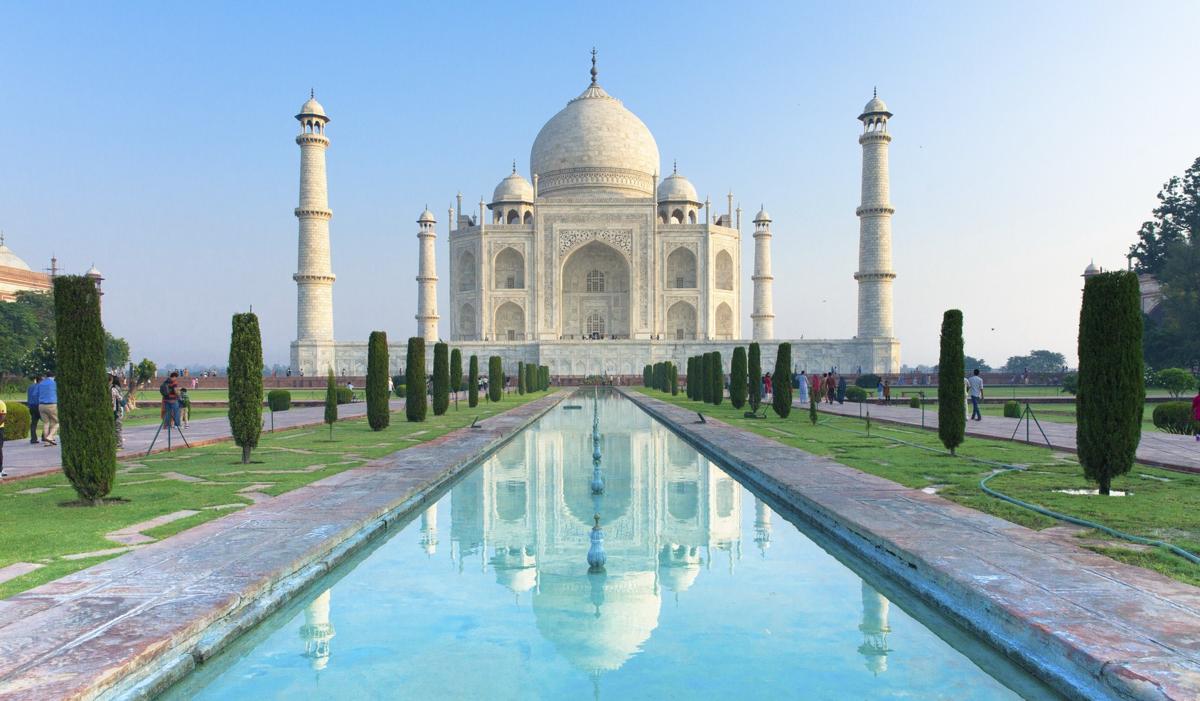
There are many different lists of the wonders of the world. Some of them are man-made, while some are natural. And for reasons unknown, people love to club them in groups of seven. Let us learn together what the new seven wonders of the world are, and what makes them so special.
Centuries ago, one man dreamed, designed, and constructed a breathtaking monument and then, it went on to become a wonder. Egyptian people building the pyramids would never have imagined that their work would one day be studied and listed in the wonders of the world. It is hard to imagine how people with minimum tools and equipment could build a structure of such a size. This is why man decided to make a list of these wonders. The history of making lists of 7 wonders of the world goes back to the times of Herodotus (a Greek historian who lived in 5th century BCE) and Callimachus (another Greek scholar who lived in or around 3th century BCE). They were the first people known to have made this list, of which only one remains, the Great Pyramid of Giza. Rest of them were destroyed due to natural calamities or some other reasons.
There are a number of lists in which man has included the seven wonders of the world. The categorizing criteria these days is different for every one of them. For example, there is a list of ancient world, there is another list dedicated to the wonders of industrial world, and so on. Here in this article, let us have a brief look at some of them and a detailed look at the new seven wonders of the world.
New Seven Wonders
The list of New 7 Wonders consists of man-made monuments from all over the world. It is a list compiled by a Swiss-based company called The New Open World Corporation. These seven structures are spread across continents, and were selected by people throughout the world using a voting method. The organizers thought that this will promote global harmony, along with increasing people’s knowledge about these historical monuments, some of which are not on their own continent. The list of the seven wonders is given below.
Chichen Itza:
The name Chichen Itza means ‘At the mouth of the well of Itza’, where Itza refers to a clan of people who were at their political and economical best around 600 to 900 CE. Chichen Itza was the political focal point for a long time in the Mayan history. This wondrous monument is located in the state of Yucatan in Mexico. The historical site consists of many stone buildings connected by a network of paved roads, called Sacbeob. Most of these buildings have been restored, while some are still under the process. These buildings have been grouped into sets of architectonic series (based on their architecture), and these sets are believed to have been separated by walls once upon a time. The three famous sets out of them are the Great North Platform, the Osaario Group, and the Central Group. These sets individually consist of various buildings, which are wonders in themselves. Chichen Itza consists of numerous temples, pyramids, and some interesting monuments, like Steam Bath and the Great Ball Court. Each of the building had its own importance and was used for some specific purpose. One particular area of Chechen Itza is open to archeologists only, in a way it is still under observation and research.
Christ the Redeemer:
Christ the Redeemer is the statue of Jesus Christ in Rio de Janeiro, Brazil. It is situated at a height of 700 meters on the Carcovado mountain, in the Tijuca forest National Park. It weighs 635 tons and stands at a height of 39.6 meters. It is built of reinforced concrete and soapstone, and is the symbol of Christianity, as well as of Rio de Janeiro. The construction of a historical monument on Corcovado was suggested first in 1850, then again in 1921. A lot many designs were considered for the religious monument, which included the representation of the Christian cross and the statue of Jesus with a globe in his hand. Christ the Redeemer was finalized, and the construction began in 1922 and continued till 1931. The cost of construction is estimated to be USD 250,000. The statue was opened to public on 12th of October, 1931, and in 2007, it became a part of the seven wonders of the world. In February 2008, the statue was struck by lightening during a storm, but was saved because of the outer layer made of soapstone, which acted as an insulator. This particular storm is known to have caused a lot of damage in the city of Rio, but the statue stood unhurt.
Colosseum:
Colosseum, also known as the Roman Coliseum, is situated in the city of Rome, Italy. Coming from such a strong background, it was a really strong contender to be included among the seven wonders of the world. It is an elliptical amphitheater and was originally known as the Flavian Amphitheater. It is said to be one of the largest buildings of the Roman empire. Construction of this amphitheater took around 10 years, starting from 70 CE. Once ready, the Colosseum was used for various public events and fights between gladiators. Gladiatorial fights were the major source of entertainment during those times, and the public events consisted of mock sea battles, animal hunts, executions, reenactments of famous battles, etc. The amphitheater was capable of seating a total of 50,000 spectators. It is estimated that some 500,000 people and over a million animals died in the events held at Colosseum. In the early medieval era, the building was not being used as a place of entertainment; instead, it is believed to have been used for various other purposes. The ancient building now stands partially ruined by earthquakes.
Great Wall of China:
The Great Wall of China is a stone wall built from Shanhaiguan in the east to Lop Nur in the west of China, and it stretches over a distance of 8,851.8 kilometers. This structure includes man-made walls as well as natural trenches, and the natural defensive barriers such as hills and rivers. It was built between 5th century BCE and 16th century BCE in order to protect the northern borders of the Chinese Empire from the nomadic tribes. This structure was not built by one particular dynasty; it is rather the result of the contribution of various dynasties, across various periods of time. Initially, the construction was done using locally available raw materials. The section over the mountains was built using locally available stones, while on land, the walls were made using earth or wood. But with the beginning of the Ming Dynasty, the walls were made using bricks. Other materials, like lime, tiles, and stones were also widely used. With the use of bricks, the construction is believed to have fastened, and these walls were more stronger too. The wall is now in ruins at most of the places and only a few parts remain in good condition. Parts of it have sustained years of erosion, human attacks, modern-day construction, and even graffiti at a lot of places.
Machu Picchu:
Machu Picchu is a pre-Columbian Inca site in Cuzco, Peru. It is located at a height of 8,000 feet above the sea level on the crest of the mountain Machu Picchu. The name Machu Picchu means Old Peak, and is often referred to as The Lost City of the Incas. Its construction started in 1430 BCE, and the city was abandoned a hundred years later. It remained hidden from the outside world for hundreds of years, until it was discovered by Hiram Bingham III, an American historian, in the year 1911. Because of its location, Machu Picchu remained hidden from most of the world, including the Spanish conquerors. But now that it is in the seven wonders list, it is a famous tourist attraction and is visited by people from all across the world. It is believed to have been built at the peak of the Inca empire, and is the proof of their royalty and religious beliefs. Inti, in Peruvian, means the Sun, and it can be easily understood that one of its primary buildings is The Temple of the Sun. The other main buildings are the Intihuatana and the Room of the Three Windows. Most of the buildings in Machu Picchu are in some or the other way related and dedicated to their God, The Sun. This site is on the list of Endangered World Heritage Sites, which is why tourism in Machu Picchu is of great concern. Scientists believe that more the people, more will be the damage.
Petra:
Petra is located in Arabah, Ma’an Governorate, Jordan, on the slope of Mount Hor. It was constructed by Nabataeans as their capital city, and is well-known for its rock-cut architecture. It was constructed in 100 BCE and surprisingly remained unknown till 1812, when it was discovered by Swiss explorer Johann Ludwig Burckhardt. Petra was made a World Heritage Site in 1985, and entered the list of seven wonders in 2007. It is believed that the inhabitation of Petra began during the 18th dynasty of Egypt. It grew economically and politically because of its important location on the trade routes. Petra’s geography gave it a fortress-like protection and it remained protected for ages. The people of Petra are known to have conserved water using dams, hence enabling the city to grow exponentially. It is believed that the people stored water for the droughts and had created an artificial oasis. The downfall of Petra began under the Roman empire, the basic reason being the change of trade routes. Most of this city was destroyed by earthquakes, which damaged buildings and fractured the water management system.
Taj Mahal:
Taj Mahal, famously known as the Symbol of Love, is a mausoleum built by the Mughal emperor Shah Jahan for his wife Mumtaz Mahal. It is located in Agra, India. Taj Mahal’s construction began around 1632, and it took around 21 years to be completed. It was constructed according to the Mughal architecture, which is a combination of Persian, Indian, and Islamic styles. The mausoleum was built solely in marble, while other buildings in the complex were made of red stone. For the decoration purposes, 28 types of precious and semi-precious stones were used. The raw material is believed to have been ordered from as far as Afghanistan in the North and Sri Lanka in the South. It is said that nearly 20,000 workers were employed from all across the country for the construction work. These included skilled artisans, carvers, sculptors, and stone cutters of excellent rapport. All in all, 37 people formed the creative unit of the project, some of whom were from foreign countries as well. The approximate cost of construction is estimated at 32 million rupees (Indian currency). It is considered as the magnum opus of Mughal Empire and attracts tourists from all over the world. Statistics suggest that approximately 2 to 4 million people visit Taj Mahal annually.
These were the new seven wonders of the world. Now, let us have a look at one other wonder that needs to be mentioned and has been considered as the honorary candidate, just because it is the last surviving structure of the ancient seven wonders. It has been chosen in order to honor its sustainability of natural and human tortures, equally.
Giza Pyramid Complex
Giza Pyramid Complex, also known as Giza Necropolis, consists of three pyramids that are known as the Great pyramids and one huge sculpture called the Sphynx. This is the last remaining monument of the ancient wonders. This complex is situated some 25 kilometers southwest to the city of Cairo and some 8 kilometers from the ancient city of Giza. The three pyramids found in this complex are of different sizes. The biggest of them is known as the Great Pyramid of Giza or the Pyramid of Chepos or the Pyramid of Khufu. The one smaller to this is called the Pyramid of Khafre or the Pyramid of Chephren, and the smallest one is known as the Pyramid of Menkuare. These three pyramids are surrounded by some very smaller structures that are known as queen pyramids, causeways, or valley pyramids. The Sphinx is situated at the eastern side of the complex. These structures are believed to have been constructed in and around 25th century BCE by an army of some 35,000 skilled and non-skilled laborers. It is said that the Pyramid Of Khufu itself took some 20 years to be built, and it’s the tomb of the Fourth dynasty Egyptian King Khufu. Whether the workers who worked night and day were slaves is still a debated point. Most believe they were, while some researchers also believe they were not.
Some other lists worth mentioning are:
Seven Wonders of the Ancient World
- Great Pyramid of Giza
- Hanging Gardens of Babylon
- Statue of Zeus at Olympia
- Temple of Artemis at Ephesus
- Mausoleum of Maussolos at Halicarnassus
- Colossus of Rhodes
- Lighthouse of Alexandria
Seven Wonders of the Medieval World
- Stonehenge
- Colosseum
- Catacombs of Kom el Shoqafa
- Great Wall of China
- Porcelain Tower of Nanjing
- Hagia Sophia
- Leaning Tower of Pisa
Seven Wonders of the Modern world
- Channel Tunnel
- CN Tower
- Empire State Building
- Golden Gate Bridge
- Itaipu Dam
- Delta Works/Zuiderzee Works
- Panama Canal
Listing all the wonders of the world is nearly impossible. I can go on and on and on about this topic, thanks to man and his wondering. But with this article, I am hoping to have sufficiently answered your query.
